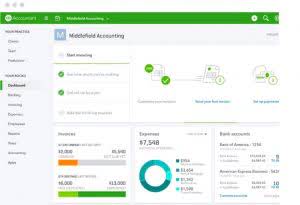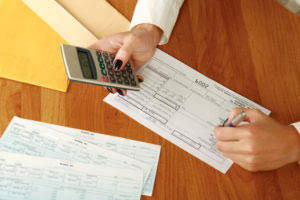
Understanding Fixed Asset Accounting: A Complete Overview

Fixed asset accounting significantly influences a company’s financial statements, particularly the balance sheet and income statement. It affects metrics like fixed asset turnover ratio and net fixed assets. If you’re lucky enough to use an accounting software application that includes a fixed assets module, you can record any depreciation journal entries directly in the software. In many cases, even using software, you’ll still have to enter a journal entry manually into your application in order to record depreciation expense. The reinvestment ratio is calculated by dividing capital expenditures by depreciation. This ratio tells how much an organization is investing in fixed assets and if they are replacing depreciated assets.
What is Fixed Asset Accounting?
When the company buys this van, they need to record the transaction in their financial records. This process involves making a journal entry to reflect the purchase of the van as a fixed asset on their balance sheet. Now, let’s break down https://x.com/BooksTimeInc how this transaction is recorded step by step with a simple example. Various methods may be elected by organizations to depreciate fixed assets. Regardless of method applied, the journal entry for depreciation will include a debit to depreciation expense and credit to accumulated depreciation to be used in the calculation of net fixed assets.
Situation 1. The business writes off the fixed assets or scraps them as having no value
QuickBooks Online doesn’t have dedicated features for fixed asset disposals so you need to do this manually. We include the Fixed Assets account twice in the journal entry to better illustrate the methodology, but many accounting systems won’t allow you to include an account more than once. If your system doesn’t allow you to include Fixed Assets twice, then simply net the fixed assets accounting entries two amounts resulting in a credit to Fixed Assets for $17,000. When payments on the note receivable are received, interest income will be recognized, but not any additional gain on the sale. Here are the journal entries for selling our asset in exchange for a $20,000 note receivable and then receiving the first-month payment of $1,000 including $167 of interest income. Organizations must exercise judgment to determine a reasonable dollar threshold based on factors such as the size of their entity and type of operations.

OTHER FIXED ASSET JOURNAL ENTRIES
- Here are the journal entries for selling our asset in exchange for a $20,000 note receivable and then receiving the first-month payment of $1,000 including $167 of interest income.
- Entities record their purchase of a fixed asset on the balance sheet, Asset purchases used to be noted on a sources and uses of funds statement, which is now called a cash flow statement.
- The purpose of depreciation is to allocate the cost of a fixed or tangible asset over its useful life.
- Managing a fixed asset’s life cycle includes acquisition, maintenance, depreciation, and disposal.
- NetSuite’s financial management solution provides real-time visibility into all of your company’s fixed assets and expedites financial transactions.
This method is used only when calculating depreciation for equipment or machinery, the useful life of which is based on production capacity rather than a number of years. It keeps your depreciation expense the same for each year in the life of an asset. HighRadius Record to Report (R2R) solution transforms bookkeeping, bringing automation to the forefront to significantly boost efficiency and precision. From data fetching to journal entry and analysis, HighRadius empowers organizations to achieve a groundbreaking 50% reduction in manual tasks through its no-code platform, LiveCube.

Basically the grouping of fixed assets allows common depreciation policies to be applied. For example, computer equipment might be one grouping and the policy might be to depreciate all items in that group over 3 years. Costs forming part of buildings fixed assets typically include the following. The anticipated duration over https://www.bookstime.com/articles/outstanding-checks which the fixed asset is expected to provide economic benefits to the company. It determines the time period over which depreciation will be allocated.
Accounting for Depreciation of Fixed Assets
A Fixed Asset Register (FAR) acts as the backbone of this process, offering a centralized, detailed view of all assets owned by an organization. Example of Entries When Selling a Plant AssetAssume that on January 31, a company sells one of its machines that is no longer used for $3,000. Also assume that the depreciation expense is $400 per month and the general ledger shows the machine’s cost was $50,000 and its accumulated depreciation at December 31 was $39,600.
Total fixed assets vs. net fixed assets

Potential issues include financial discrepancies, regulatory non-compliance, and operational inefficiencies. Regular updates to the FAR are necessary to meet these requirements and to ensure that asset records are accurate and compliant. Calculating depreciation will differ depending on the method of depreciation you’ve chosen. The impact extends to the month-end close, where organizations experience a 30% faster close through the automation capabilities of Journal Entry Management. This feature offers automated posting options, significantly expediting the overall closing process while ensuring accuracy. Or another country that follows IFRS instead of GAAP, we could elect to perform a revaluation of that asset up to its fair market value as soon as we found out about that steep increase in value.

What if We Sell the Asset?
This could be due to sale, retirement, or any other form of disposition. Each asset should have its own record card, our free fixed asset register template will help you to establish a fixed asset register. This method evenly distributes the cost of the asset over its useful life. It calculates depreciation as (Purchase Price – Salvage Value) / Useful Life. Gains happen when you dispose of the fixed asset at a price higher than its book value. Alternatively, if the sale amount is only $6,000, the company ABC Ltd. will make a loss of $375 (6,375– 6,000) on the sale of equipment.
